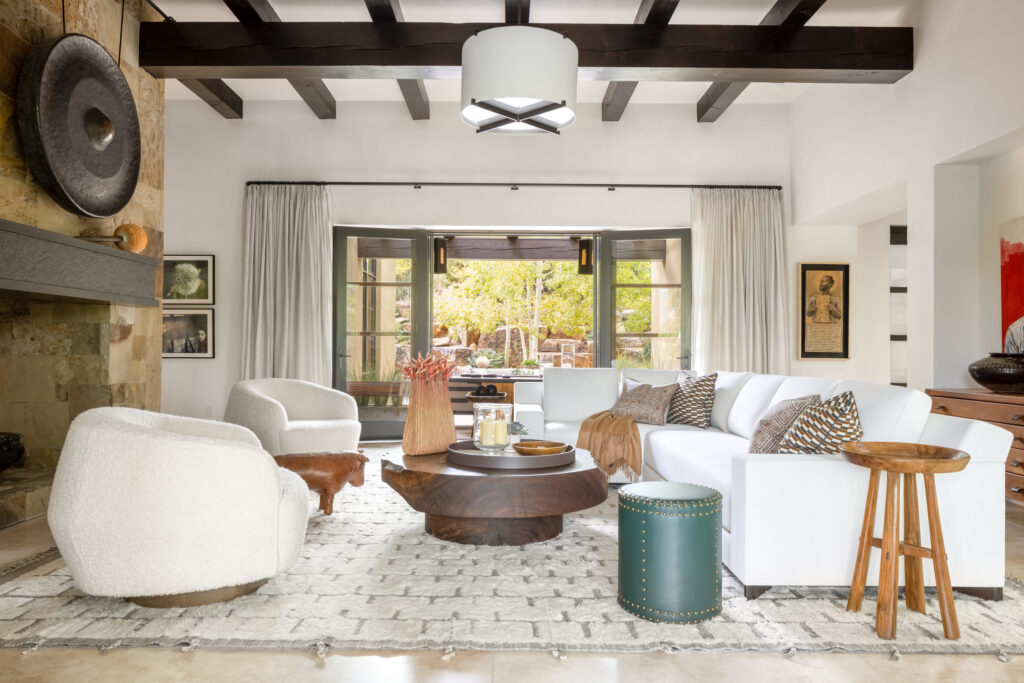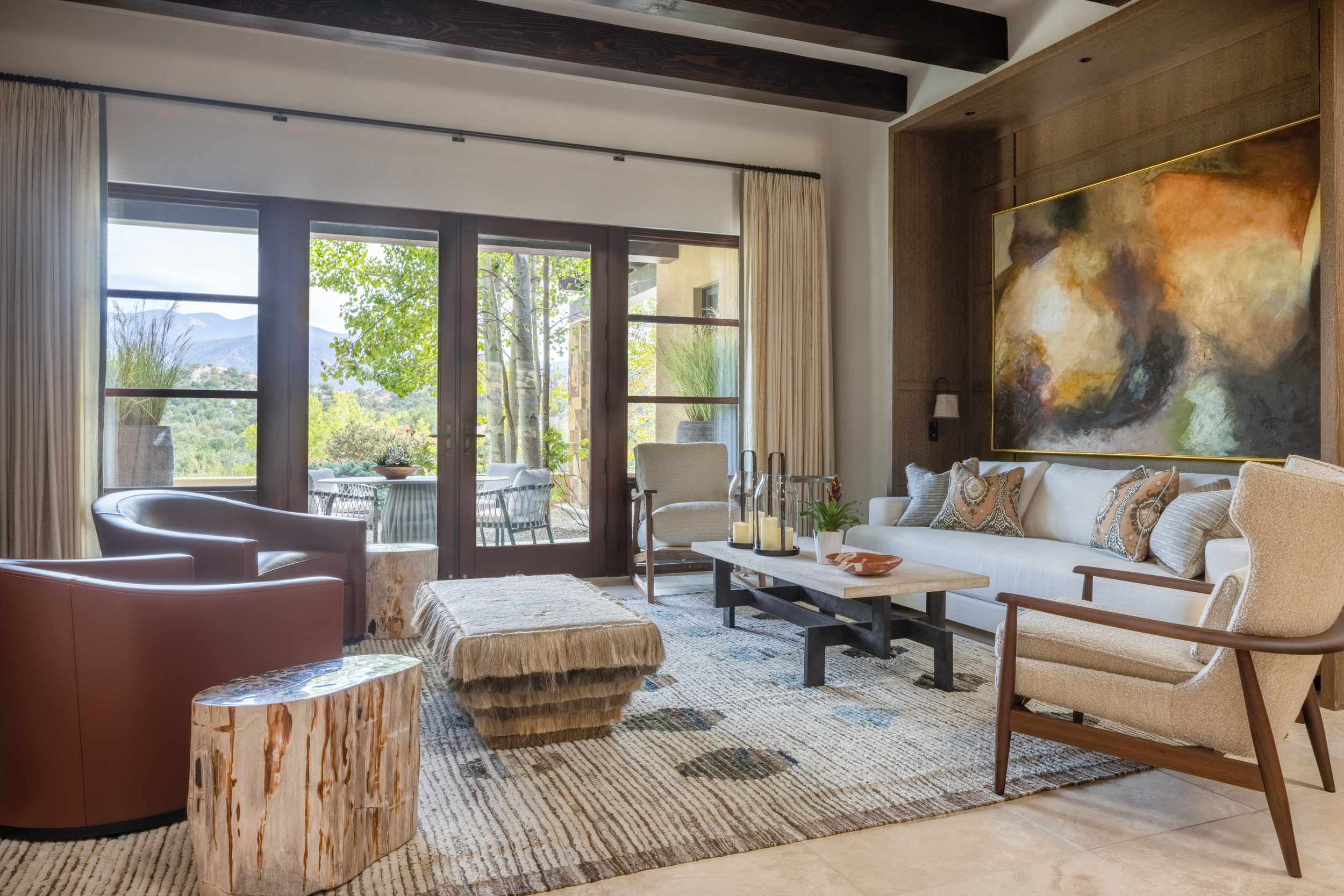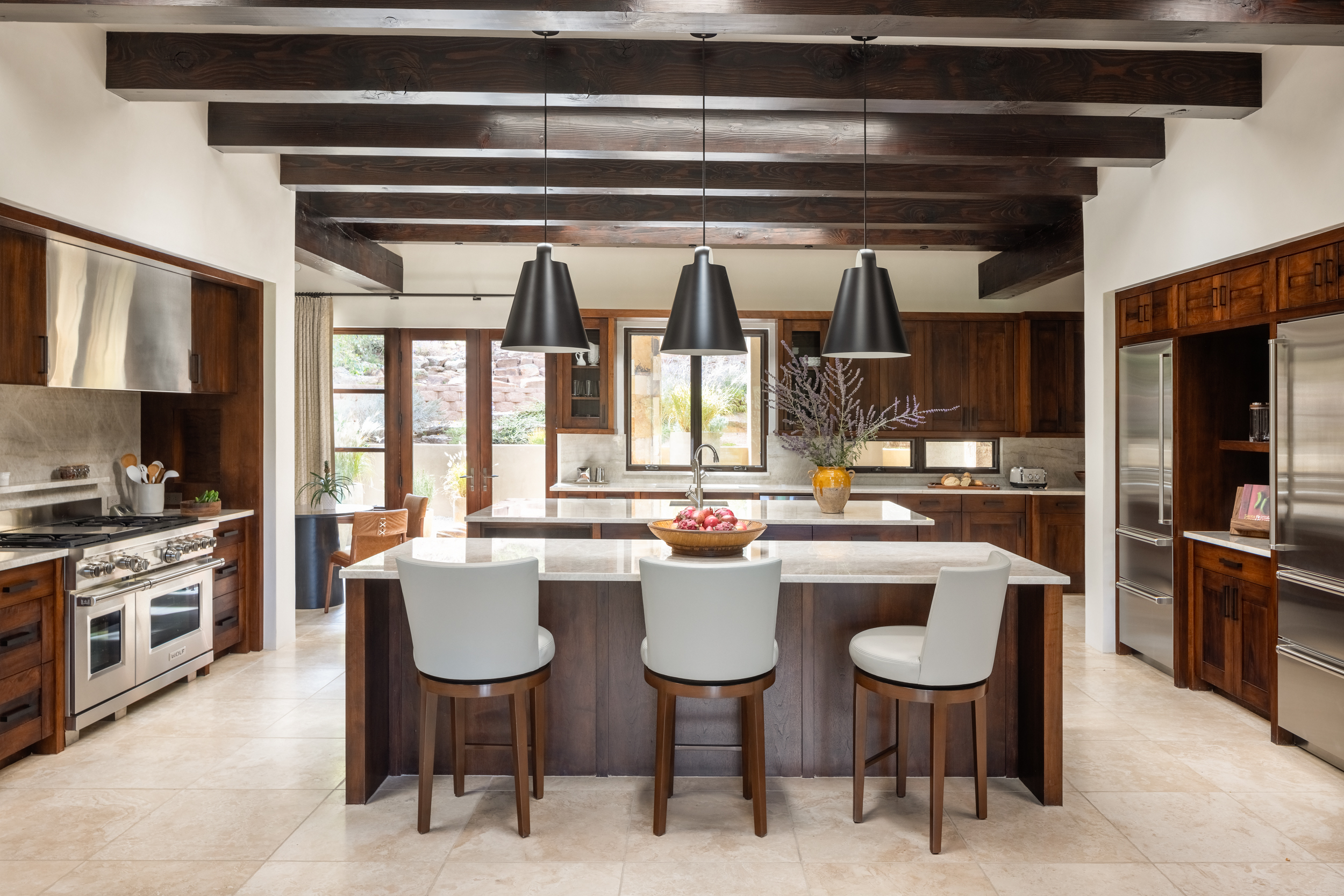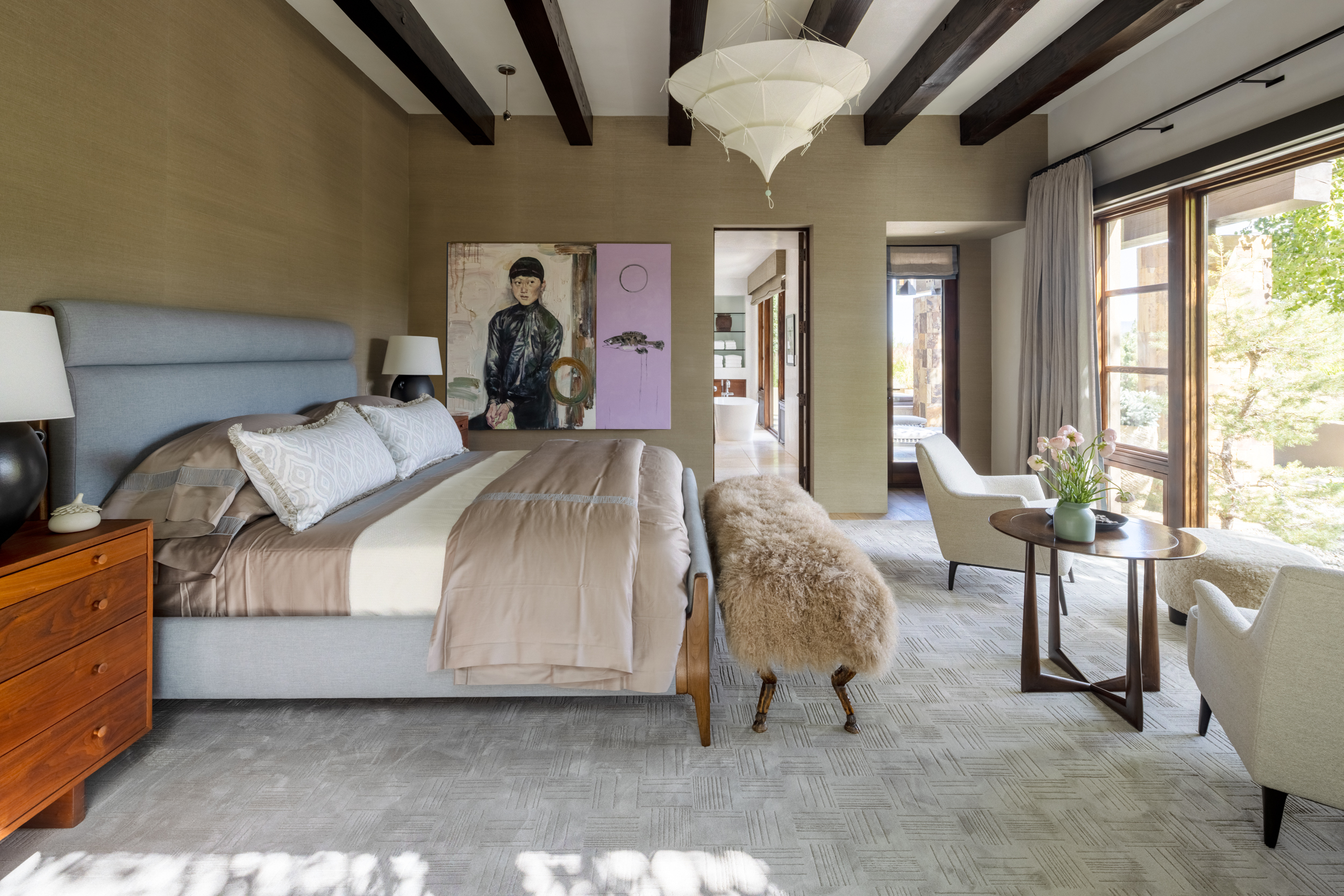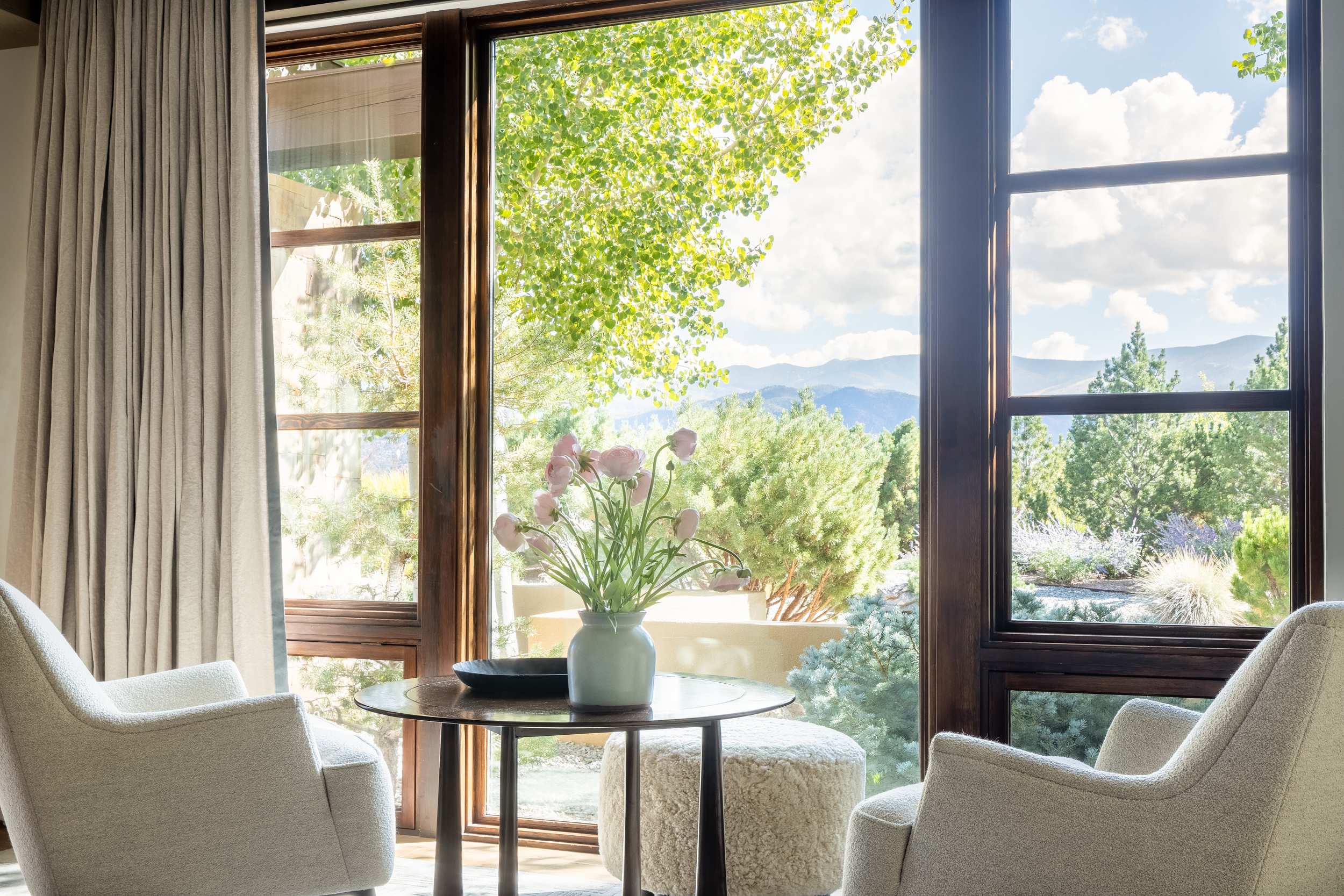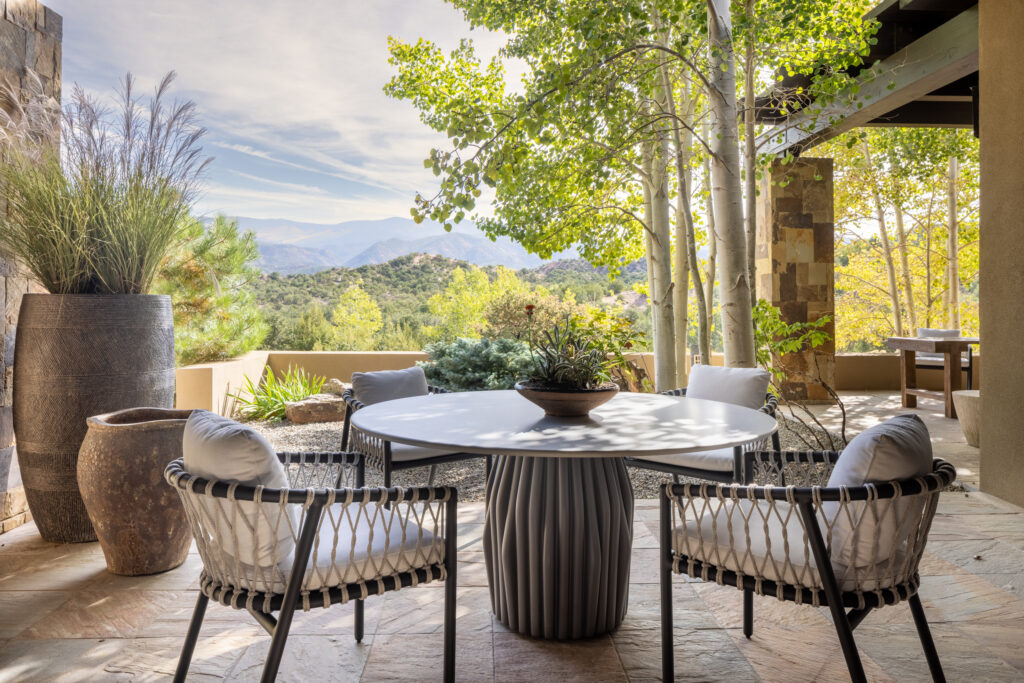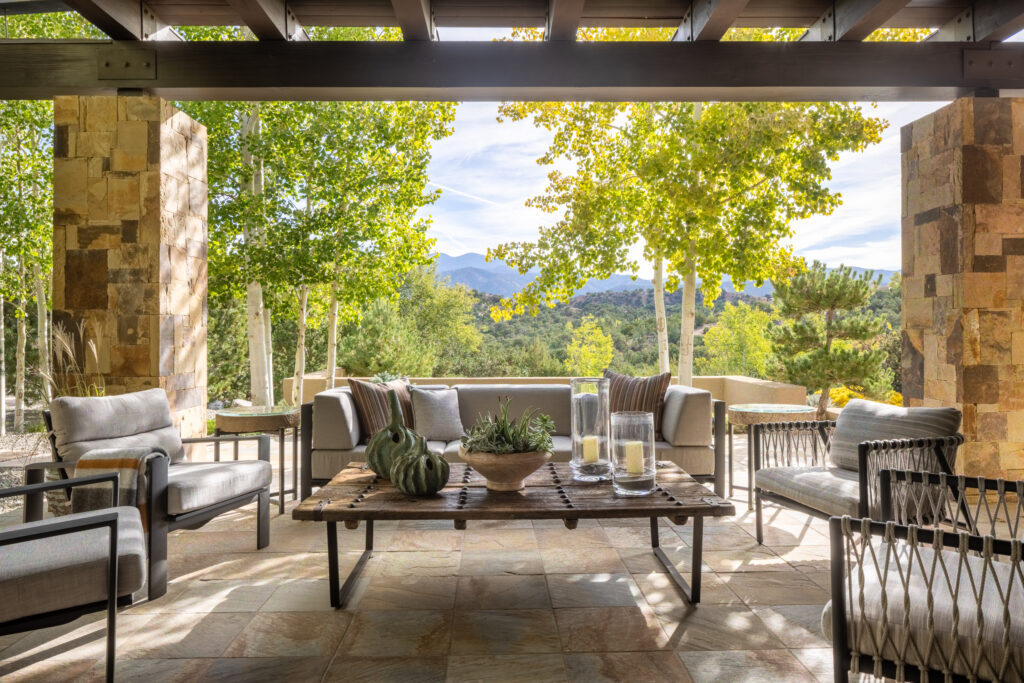Published As:
Every Picture Tells a Story
Renovation Architecture and Interior Design: Tom Stringer Design Partners
Text: Abigail Stone
Photography: Wittefini
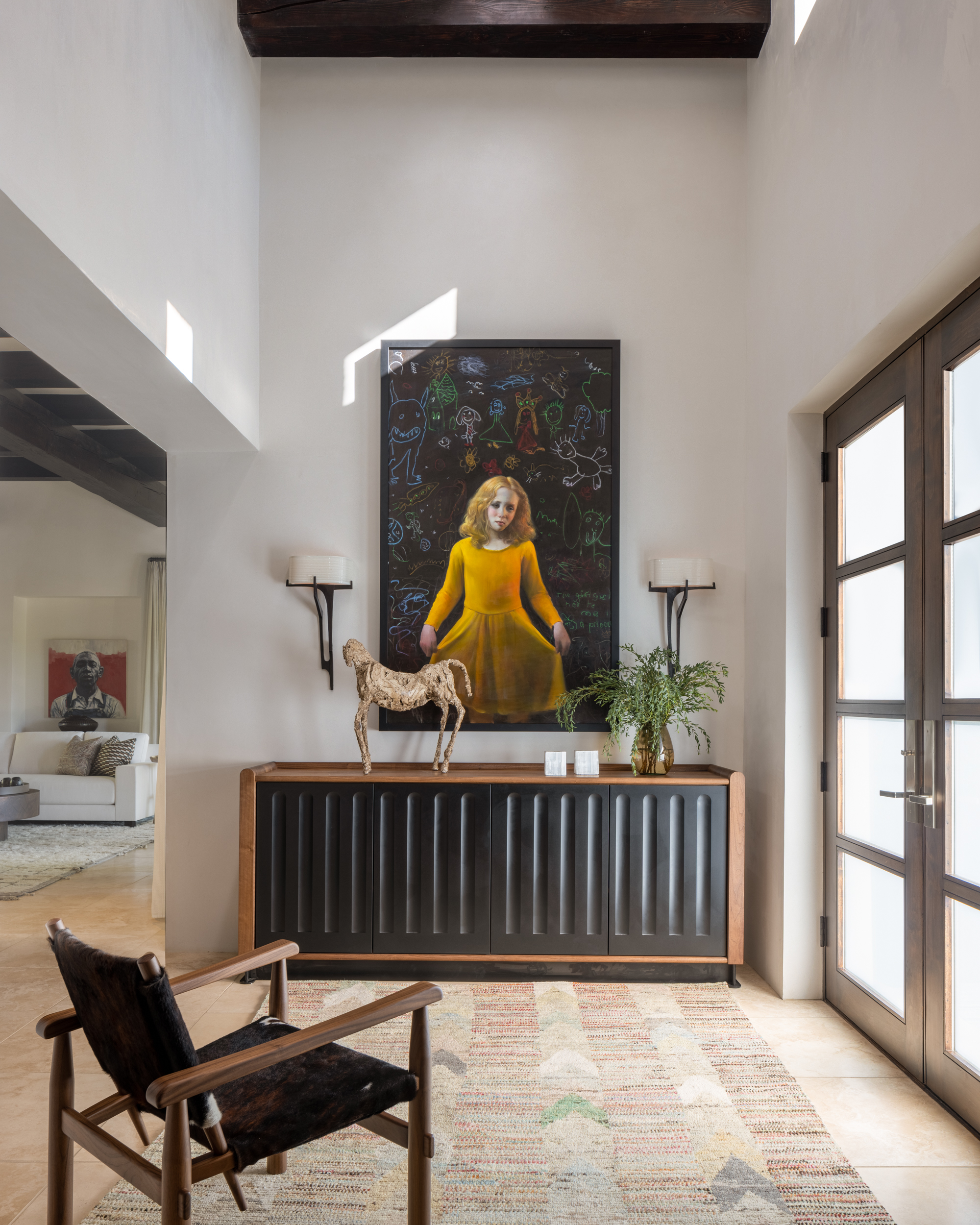
For Tom Stringer’s clients, the impetus for purchasing a second home came down to wall space. “They’re avid art collectors who had pieces in storage that they really loved,” explains the Chicago-based architect, who also shouldered interior design duties on this Santa Fe home.
The clients asked Stringer to take a look at a property they were considering. “It’s on a high ridge overlooking a valley, so it enjoys beautiful, unobstructed views,” Stringer says. “There’s a main house, a guest casita and a series of outdoor courtyards that promote indoor-outdoor living.” Private and well-constructed, it only needed a bit of fine-tuning to accomplish their goal. “We updated all the finishes, the mechanical and electrical systems, reconfigured the primary bathroom, tweaked the kitchen and added windows in the dining room to frame a waterfall that spills out of a grove of quaking aspens.”
With the renovations underway, Stringer turned his attention to the interiors. “I like to have a total picture in mind right from the start,” he says. “Given that art can often be the most challenging part of a project, he was grateful to be working with a pre-existing collection. “It’s very hard to get a client to fall in love with a painting or a sculpture—it has to happen organically,” Stringer says. “It’s a lot easier starting with art they already love.”
He relied on those pieces to lead the design. “We shopped their existing inventory to pull together things that we felt were relative to the high desert,” he says. While some of the works are by artists who hail from the Southwest, including Vernon Fisher, James Petran and Ward Lockwood, Stringer shied away from the motifs—wagon wheels, bleached cow skulls and the like—that often define homes in this area. “Our objective is to reflect a sense of place without indulging in cliches,” he says.
To balance the arresting contemporary artworks he’d chosen, Stringer gravitated toward substantial wooden case goods and modern primitive furniture with strong lines and robust shapes upholstered in pale neutrals. Worn Moroccan rugs from the High Atlas Mountains, supple leathers, and inviting textiles—like the tactile Kerry Joyce fabrics used for the draperies in the family room and the wife’s office—underline the feelings of warmth and welcome that permeates these rooms. Animal-inspired occasional pieces, like the bull-shaped leather footstool in the living room or the goat-footed bench in the primary bedroom, add a note of humor and levity. “I don’t believe in uncomfortable rooms or uncomfortable furniture,” Stringer stresses. “I mean, the true luxury of collecting art is living with it, so why would you want to inhabit a space that feels stiff or formal?”
To confirm that objective, he highlighted the relationships—between furniture and art, between artworks, and from the furniture in one room to that in another. “The critical part is finding the conversation, visual or otherwise,” Stringer says. “Sometimes it’s as simple as ‘There’s a landscape so let’s put something abstract here,’” such as the pairing of the Yoel Diaz Galvez oil in the dining room with the moody Raphaelle Goethals works in the nearby hallway. Or the foyer, where a Joseph Eads abstract hangs across from a figurative painting by Bruno Surdo; the works are unified by bright bursts of goldenrod and tempered by the industrial lines of the LCI Chair by Le Corbusier, Pierre Jeanneret and Charlotte Perriand (its hide seat nods to the location).
In the living room, the heft of the gong that hangs over the fireplace is balanced by the boldness of Hung Liu’s oil portrait. There is the undulating rhythm of curved chair backs that dances through the house, linking the Holly Hunt swivel chairs in the great room and the family room with the kitchen island’s A. Rudin barstools and the dining room’s Mario Bellini and Holly Hunt chairs; or the parity found in the shape of The Bright Group’s Lounge chair in the wife’s office and the wing chair in the family room. Sometimes the relationship is less obvious—like the leather sconces by Adam Otlewski in the family room and the cluster of Souda Kawa pendants over the dining table. The latter is fashioned from bisque poured into leather molds. “There’s this intriguing dialogue between the two materials,” Stringer points out. “What drives me is pretty visceral. I’m always asking myself, ‘How do these things work together to tell a story?’” Tom Stringer Design Partners, tomstringer.com
